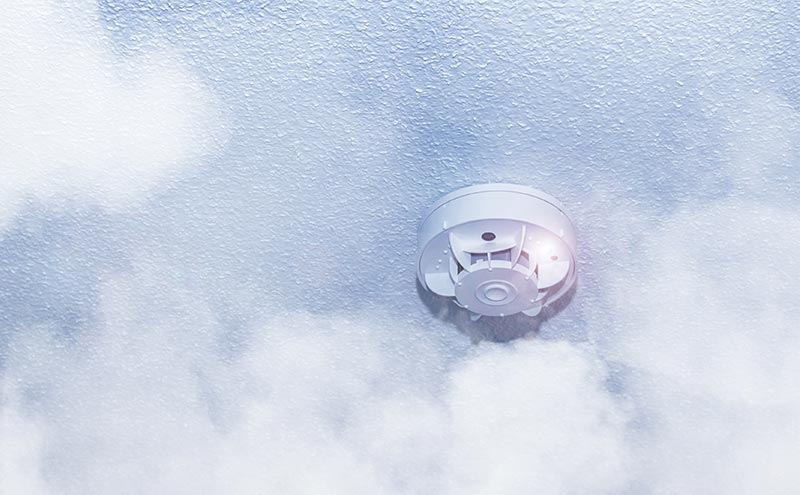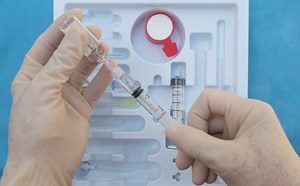
CO Poisoning – Pearls and Management
Anthony Del Zotto, DO, Charleston Area Medical Center and Jaryd Zummer, MD , University of Kentucky
Better late than never. It is still winter, and we are all trying to stay warm inside while awaiting warmer days to arrive! We thought this would be a fitting time to review CO toxicity, with some pearls and management tips.
Carbon monoxide (CO) is the true “silent” killer. A major contributor to indoor fire-related incidents, it is responsible for up to 500 deaths per year in the US and has both significant short and long-term morbidity. This colorless, tasteless, and odorless gas is formed via the incomplete combustion of carbon-containing fuels. Most common implicated devices include furnaces, fireplaces, space heaters, stoves, and automobile or boats, especially in poorly ventilated areas or with faulty or blocked exhaust systems. Hemoglobin’s affinity for CO is approximately 200-250 times stronger than that of oxygen. When hemoglobin binds CO to form carboxyhemoglobin, it effectively reduces hemoglobin’s O2 carrying capacity (leftward shift of the oxyhemoglobin dissociation curve) and delivery of O2 to vital tissues. This tissue hypoxia not only causes a shift to anaerobic metabolism and consequently lactate production, but also increases cerebral blood flow and capillary permeability to cause cerebral edema in the most severe cases.
CO toxicity presents with a wide range of symptoms and findings that are often vague and non-specific. Based on its broad array of presentations, diagnosis can be especially difficult in pre-verbal or younger pediatric patients. Another clinical conundrum exists as both oxygen saturation (SaO2) and partial pressure of oxygen measurements (PaO2) are likely to be normal. A standard pulse-oximeter incorrectly detects the wavelength of carboxyhemoglobin as oxygenated hemoglobin, while the dissolved oxygen in blood is not affected by CO’s effect on hemoglobin. These readings, as well as a patient’s color and respiratory rate and effort may therefore be deceptive and lead the physician away from recognition of severe tissue hypoxia. As such, CO levels should be assessed via direct measurement using co-oximetry (via either venous or arterial sampling). For all these reasons, the diagnosis of CO toxicity requires careful evaluation of historical clues and high clinical suspicion. The most pressing scenario is usually that of an indoor fire with patients presenting with associated burns and smoke inhalation injuries. Other instances that should raise suspicion include those where fuel is being burned indoors or in poorly ventilated areas (including the backs of vehicles or boats), or if multiple other people in the child’s environment are having similar symptoms.
Symptoms from CO toxicity can start when levels are as low as 5%, with impaired judgment and fine motor skills. As levels increase, symptoms ranging from headache (most common) and “flu-like” symptoms (fatigue, dizziness, nausea, and vomiting) develop, and can progress to neuro-cognitive impairment, with alterations in level of alertness, vision changes, memory impairment, and sensorimotor deficits. A classic descriptor of CO toxicity includes cherry red lips or oral mucosa, however this finding is very rare in actuality, and is usually only present on post-mortem examination. With CO levels exceeding 60% (a marker of poor prognosis), patients may succumb to arrhythmias and cardiovascular collapse, seizures, coma, and death.
Both duration of CO exposure and associated levels, as well as patient-specific factors correlate with clinical presentation and prognosis. Pediatric patients in particular can be more susceptible to hypoxic insult, with more metabolically active tissues and requirements that often make them more quickly symptomatic. Another important determinant of normal CO levels is a patient’s smoking status; smokers may have a baseline CO level of up to 10%, while nonsmokers’ levels are typically closer to 1%. Consider also factors such as anemia and residing at high altitude. Finally, time since exposure and any prior delivery of supplemental oxygen must be considered, as CO levels fall rapidly (especially on O2 therapy) with time and may not reflect cellular dysfunction that is already occurring or has occurred.
The management of CO toxicity begins with a thorough primary survey to evaluate the status of the patient’s airway, breathing, and circulation. This is especially important in smoke inhalation, as airway stability can be a dynamic process depending on the extent of insult and resultant edema. When CO toxicity is suspected or confirmed, the cornerstone of management involves providing immediate 100% supplemental O2 to promote CO elimination, as well as treatment and prevention of tissue hypoxia, metabolic acidosis, and cerebral edema. Carboxyhemoglobin’s half-life is directly affected by the presence of oxygen, which acts to displace CO off hemoglobin. At room air, carboxyhemoglobin half-life is around 5 hours, while delivery of 100% O2 reduces this to approximately 90 minutes, and hyperbaric oxygen (HBO) therapy can further reduce this to 30 minutes.
While some controversy exists regarding the utility of HBO therapy in CO poisoning, it helps to decrease CO levels more rapidly (considerations for ED and hospital length of stay and admission), as well as reduce the incidence and severity of delayed neurologic sequelae. Consensus guidelines for HBO therapy include: any patient with a carboxyhemoglobin level above 25%, pregnant patients with a carboxyhemoglobin level above 15%, loss of consciousness, seizure, evidence of end organ ischemia, severe metabolic acidosis (pH<7.1), and prolonged altered mental status or other abnormal neurologic examination. Importantly, patients should be otherwise stabilized prior to initiating HBO, due to the difficulty in management of acute medical conditions while in the hyperbaric chamber. Additionally, younger pediatric patients who cannot follow instructions to equalize their middle ear pressures likely require ENT consultation for bilateral myringotomies prior to starting HBO treatment.
Disposition of patients with CO toxicity can be clinically challenging. As mentioned previously, CO levels fall rapidly once a patient is removed from the CO source and placed on supplemental oxygen, therefore decisions should be based more on clinical evolution than repeat CO levels. In patients with minimal to mild symptoms, discharge is achievable after symptomatic resolution and an observation period of up to 4 hours. Patients should not return to environments where they are at risk of continued toxic exposure. Depending on local practices, the emergency physician may need to alert their local fire department to evaluate the environmental exposure (CO levels) before safe return. Hospital admission is usually indicated when there are significant symptoms such as loss of consciousness, persistence of symptoms despite treatment, laboratory evidence of organ ischemia, or in children with social or medical factors preventing safe discharge. Finally, strong consideration for admission to a pediatric intensive care unit should be made for children with persistent respiratory distress, altered mental status, or other prolonged or severe neurologic sequelae.
Summary Points:
- Carbon monoxide can be a difficult to diagnose due to the non-specific symptoms
- Pulse-oximetry and blood gas samples (ABG and VBG) can be deceivingly normal. Measurement of a carboxyhemoglobin level is paramount in suspected cases
- Management of CO toxicity requires a thorough primary survey, supportive care, as well as timely delivery of supplemental oxygen
- HBO therapy can allow for a more rapid decrease in CO levels and shows promise with regards to long term neurologic sequela
- Safe discharge for patients with CO toxicity accounts for not only clinical symptoms and CO level, but also a thorough evaluation of environmental exposures
References:
- Chow Ng P, Long B, Koyfman A. Clinical Chameleons: An Emergency Medicine Focused Review of Carbon Monoxide Poisoning. Intern Emerg Med, 2018 Mar;13(2):223-229. doi: 10.1007/s11739-018-1798-x.
- “Carbon Monoxide Poisoning (Oct 2016)” ACEP Clinical Policies. https://www.acep.org/patient-care/clinical-policies/carbon-monoxide-poisoning/.
- Lip C, Thomas A. “Crackcast e159 – Inhaled Toxins.” CanadiEM, 1 Mar. 2018, https://canadiem.org/crackcast-e159-inhaled-toxins/.
- Clardy, PF, Manaker S, Perry H. “Carbon Monoxide Poisoning.” UpToDate, 17 June 2021, https://www.uptodate.com/contents/carbon-monoxide-poisoning.
- “Clinical Guidance for Carbon Monoxide Poisoning|Natural Disasters and Severe Weather.” Centers for Disease Control and Prevention, 4 Nov. 2020, https://www.cdc.gov/disasters/co_guidance.html.
- Simon, Erica. “EM@3AM – Carbon Monoxide Toxicity.” EmDOCs.net – Emergency Medicine Education, 20 May 2017, http://www.emdocs.net/em3am-carbon-monoxide-toxicity/.
- Farkas, Josh. “Carbon Monoxide Poisoning.” EMCrit Project, 29 Nov. 2021, https://emcrit.org/ibcc/co/.
- Maloney GE. Carbon Monoxide. In: Tintinalli JE, Ma O, Yealy DM, Meckler GD, Stapczynski J, Cline DM, Thomas SH. eds. Tintinalli’s Emergency Medicine: A Comprehensive Study Guide, 9e. McGraw Hill; 2020. Accessed March 17, 2022. https://accessemergencymedicine.mhmedical.com/content.aspx?bookid=2353§ionid=220747690.
- Seeyave DM, Brown KM. Environmental Emergencies, Radiological Emergencies, Bites and Stings. In: Shaw KN, Bachur RG. Fleisher & Ludwig’s Textbook of Pediatric Emergency Medicine, 7e. Wolters Kluwer; 2015.
- McGuffie, C, Wyatt JP, Kerr GW, Hislop WS. Mass Carbon Monoxide Poisoning. J Accid Emerg Med. 2000 Jan;17(1):38-9. doi: 10.1136/emj.17.1.38.
- Nickson, Chris. “Carbon Monoxide Poisoning.” Life in the Fast Lane • LITFL, 3 Nov. 2020, https://litfl.com/carbon-monoxide-poisoning/.
- Radwine, Zach. “Carbon Monoxide Poisoning.” EmDOCs.net – Emergency Medicine Education, 26 Apr. 2015, http://www.emdocs.net/carbon-monoxide-poisoning/.
- Wright, J. Chronic and Occult Carbon Monoxide Poisoning: We Don’t Know What We’re Missing. Emerg Med J. 2002(Sep);19(5):386-90. doi: 10.1136/emj.19.5.386




